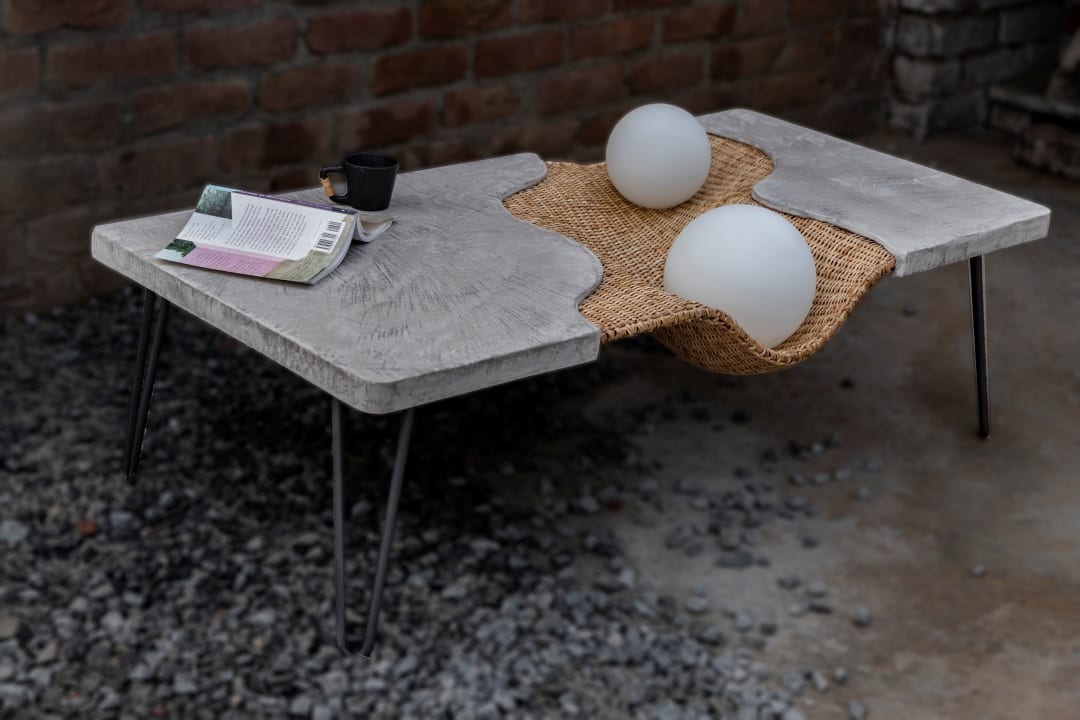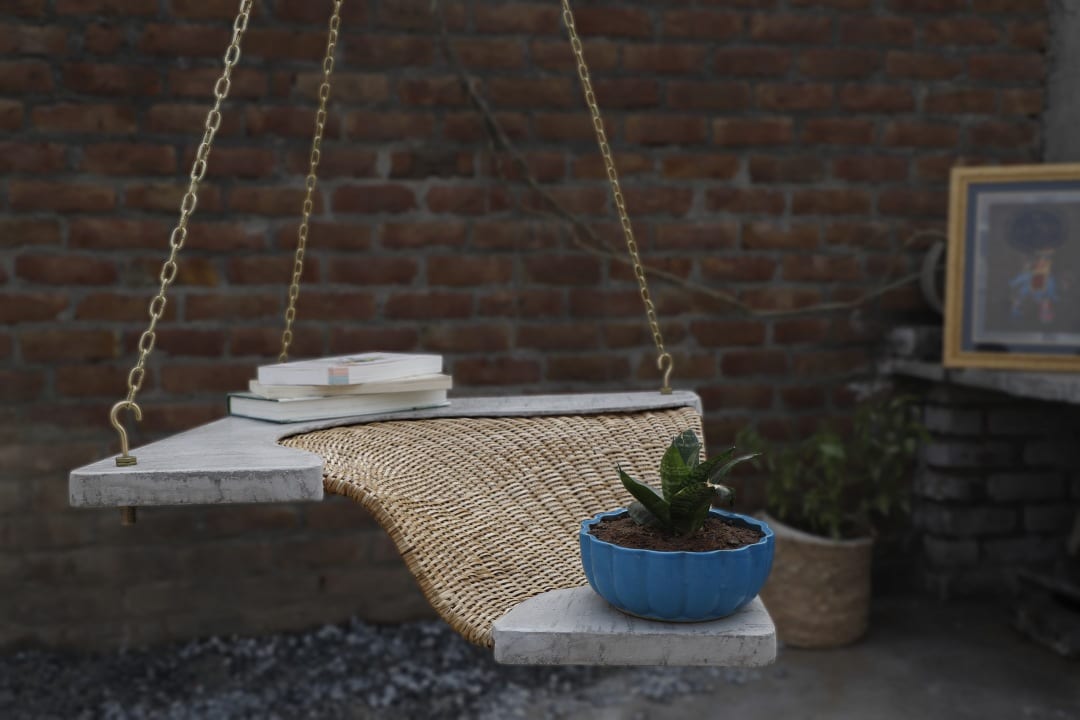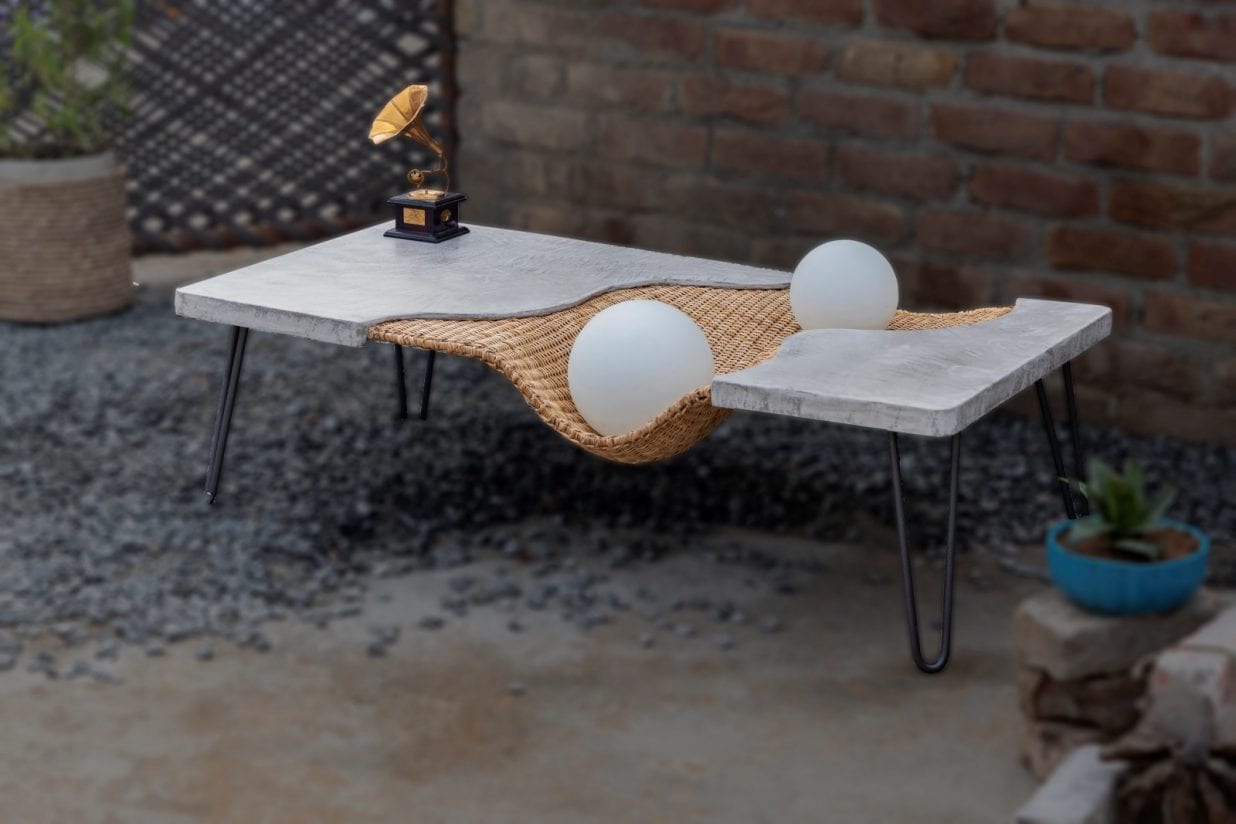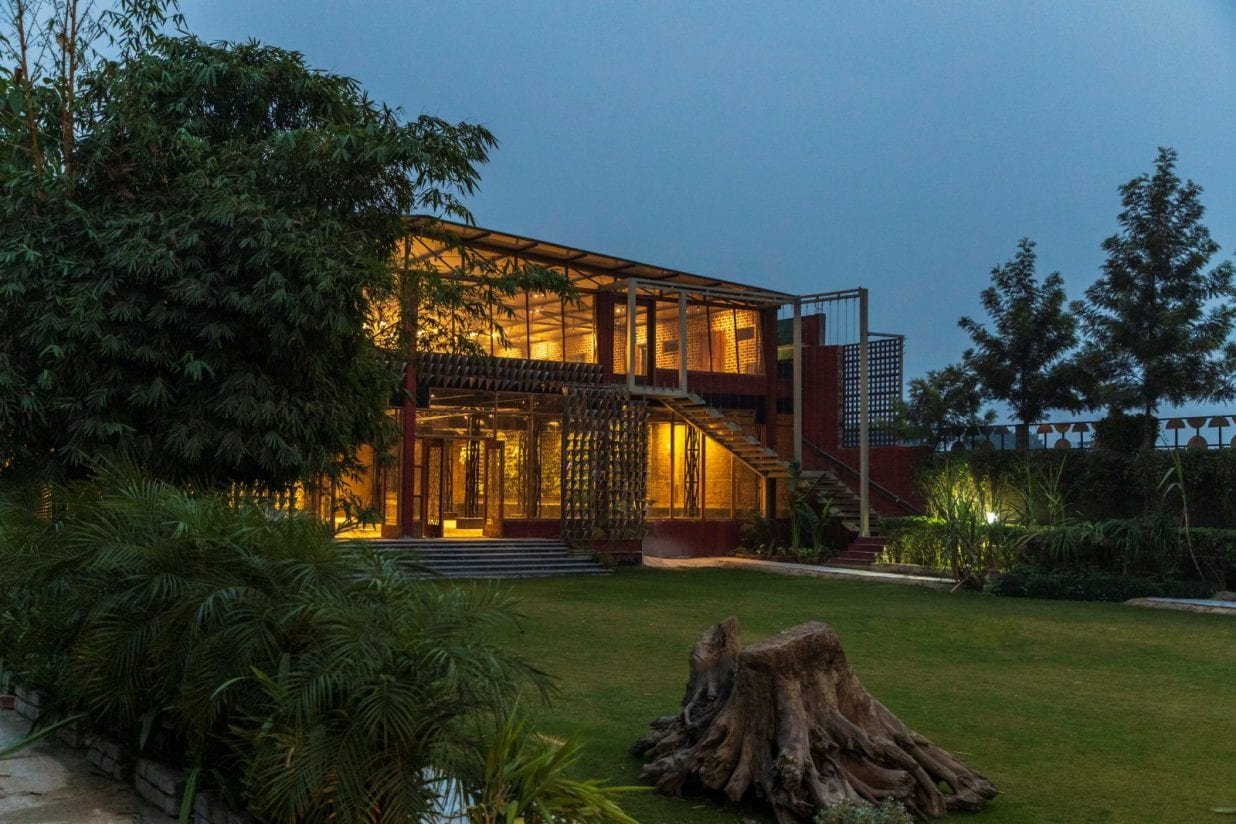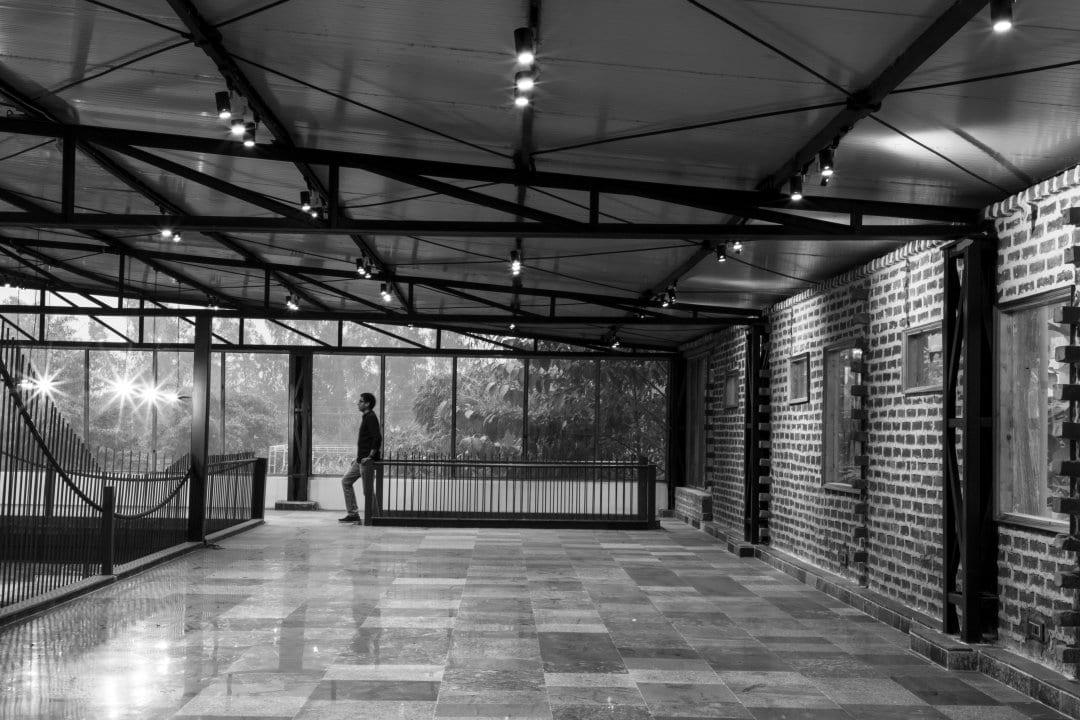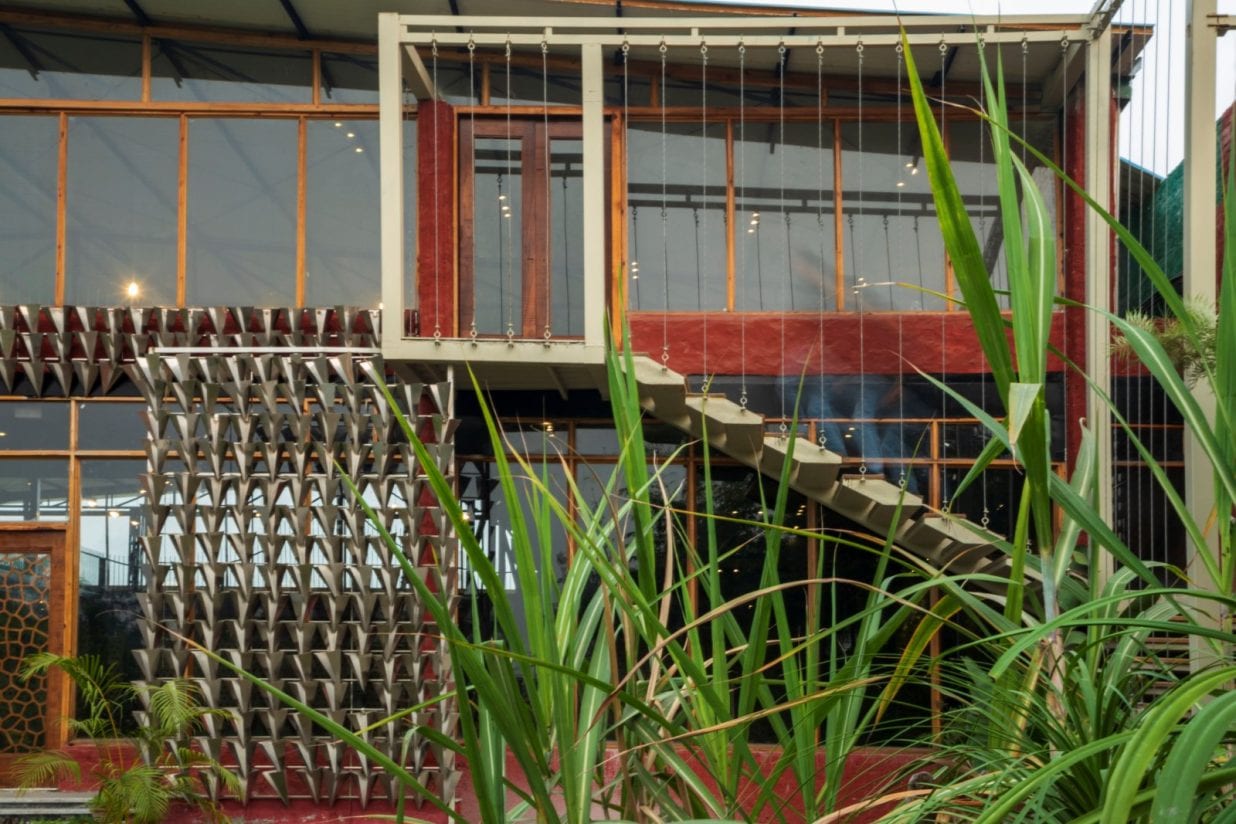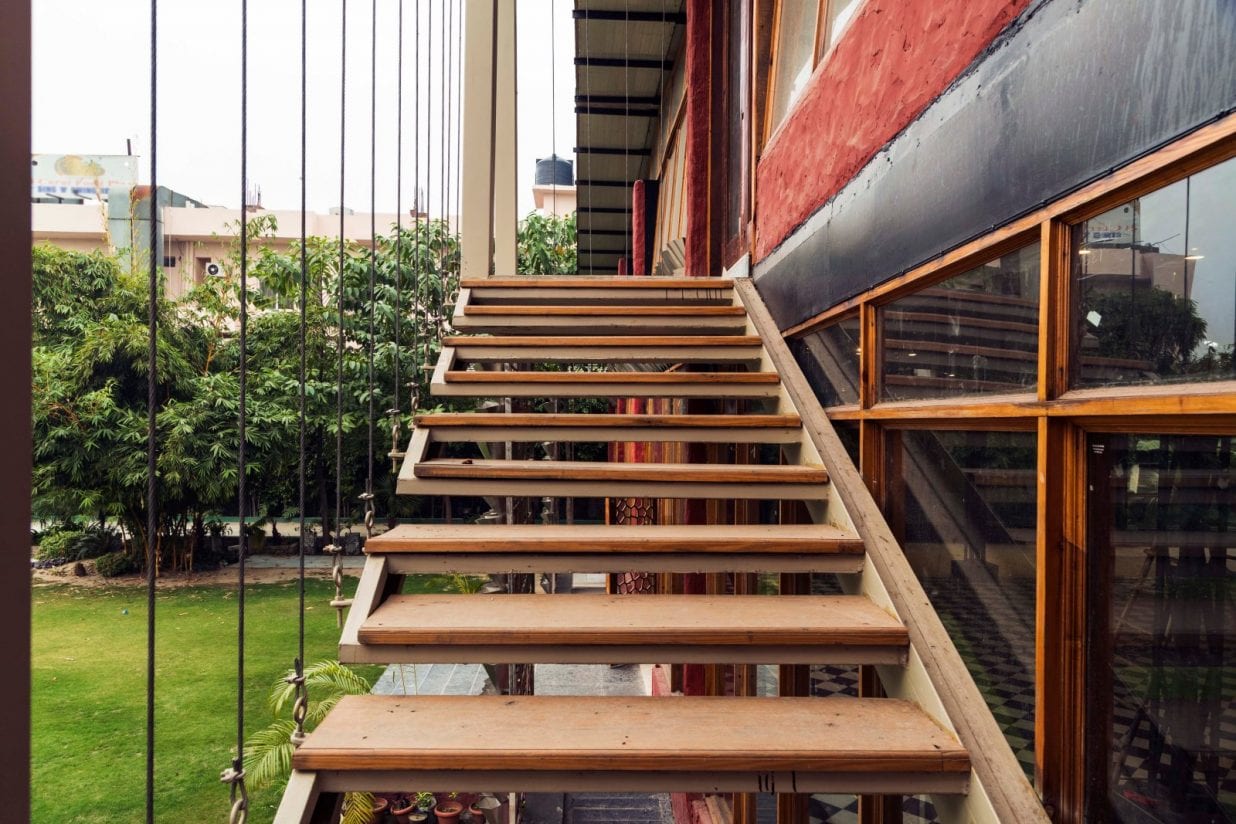The Curve of Timelessness
Design duo, Nehit Vij and Devyani Gupta, behind Intrigue Design Studio, New Delhi, create Vakr which brings alive an ancient weave by introducing it in contemporary designs.
A solid piece of concrete straddles a seemingly intricate weave of natural fibre, linking the new with the old, bringing in beauty to a form more associated with function. This would perhaps best describe a product from design firm Vakr, an artform that intends to tell the story of the synthesis of old and new techniques to generate timeless furniture designs. Vakr, a product research lab under Intrigue Designs Studio + Lab, Delhi, started by Nehit Vij and Devyani Gupta creates products that are sculptural in character with the form guided by laws of physics and nature of the material.
One of the founding partners, Nehit Vij is a graduate from the Sushant School of Architecture-New Delhi. He has a passion for passive – close to nature designs, which is reflected in his design philosophy. And it is this philosophy that tries to imbibe and revive old craftsmanship that set the wheels in motion for the creation of Vakr.
Nehit and Devyani head a 12-year-old interior design firm in Delhi and have been working on projects that involve craftsmanship and furniture-making. In their pursuit of talented craftsmen, they happened to sight a group of nimble-handed, extremely talented craftsmen with an in-depth knowledge of rattan weave techniques, an art form that was quietly dying out. In their attempt to revive this art form, the design duo started this product line as a continuation of their already successful interior venture. This, they explain, led to the creation of a value chain that appreciated a vanishing art. This also gave the craftsman an added income, with the entire process creating a challenge for their own creative cells to innovate while empowering the community of craftsmen.
Created in 2020, Vakr in Sanskrit means a steep learning curve, while they associate it with designing through material and technique explorations. A process that requires numerous iterations and adept craftsmanship. The journey resulted in a bespoke product design that redefines the relationship between the surrounding and the user.
“Lehar: our new furniture Series, is inspired by the shape and form derived by the flexible membranes and structures when weight and pressure are applied on them. A re-interpretation of how the form yields, morphing the structure to reach a stable point,” explains Nehit. The name also seems to bring our attention to the gentle wave-like rattan weave that creates a softness to the other material used, concrete.
Coffee tables, suspended side tables, shelves, and centre tables make the furniture series Lehar.
“We wanted to break away from the stereotype. We thought that we have come across buildings that are not symmetrical yet we always associate furniture with functionality more than beauty. We thus came up with this form that is a culmination of multiple curves to take the load of the product while bringing out the aesthetics of the material and the functionality aspect too.”
The artisans were initially intrigued by the parametric curves but once they understood the science behind it, they grasped the art to weave together this work of art, explains Nehit.
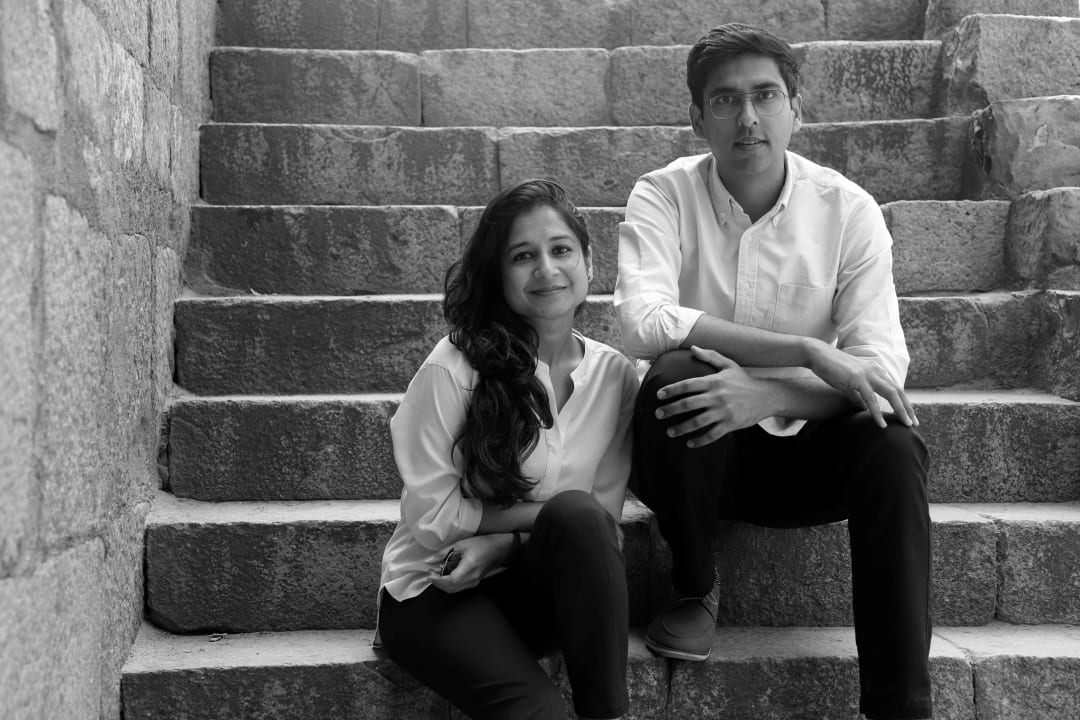
Devyani Gupta and Nehit Vij, partners and co-owners of Intrigue Design Studio and Vakr. Devyani is a reader, photographer and an avid traveller who visualises architecture in a progressive light and has the vision to bring new reforms to stagnant architecture trends in India. Nehit is the Founder Partner of Intrigue Designs. The influence of everyday things has formulated his thinking to create “Good Designs” can be achieved through a sustainable framework of an evolutionary practice inspired by nature, pushing the boundaries of innovation.
With plans to come up with the next series by December, Nehit and Devyani are expanding their material base to include reclaimed wood sourced from NGOs. “We want to bring back used wood to life,” says Nehit.
While we sit in safe cocoons talking about design, the entire country, India, is in the midst of the second and most severe wave of the pandemic.
“It has affected our projects, almost 50% of our projects are under hold. Our workshops are closed and we cannot experiment. It has affected us majorly yet we do try to help the segment of artisans by keeping them engaged by introducing them to the designers we know even during these tough times,” he says.
Vakr falls in the mid-segment of luxury products. But since it is entirely handcrafted and not mass-produced it is a niche product that literally catches attention with it exclusivity and sculptural tone.
Sustainable designs have been an underlying philosophy for the two young designers with their efforts rooted in the principles of responsiveness to local context and sustainable architecture.
One such project is a sustainable habitat/ event place for about 600 people using locally procured and indigenous materials wherever possible. The brief from the client was to come up with an ‘innovative space’ for formal gatherings rather than the stereotypical/regular banquets and conference places.
“The project took two years to complete as each and every facet – construction, landscaping, services, functionality, etc was thought from a new perspective and required extensive research and experiments. Not only were the landscape (seeds and saplings) sourced from all over India, but were strategically grown and multiplied as per the design intent and coverage area. A great concept that evolved over time to grow the food internally, which was served at the events held at the place. When in shortage, the materials could then be procured locally from nearby farms,” explains Nehit.
The hall built with brick and mud plaster maintains a temperature of 18-24 degrees Celcius throughout the year. The triple storey height maintains an ambient temperature and looks due to strategically placed green walls and glazing. This project also opened doors to the concept of green weddings and hence holds great pride for the designer’s portfolio which includes a large number of projects ranging from interiors to institutional works.
“We were not only able to deliver a project efficiently but also sell a new concept that proved to be a success for the clients,” adds Nehit.


